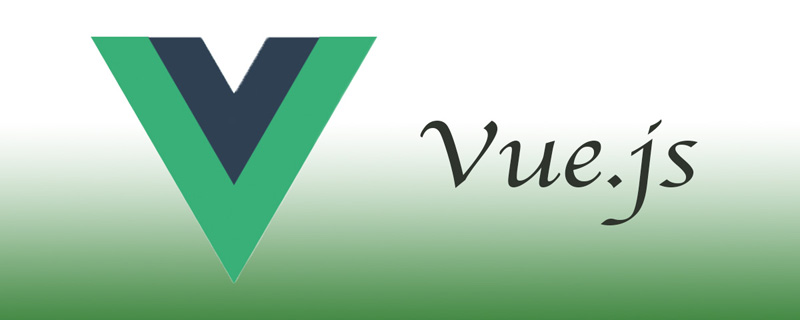這篇文章帶大家聊聊vue2.x中this的指向問題,介紹一下this為什麼指向vue實例,希望對大家有幫助!

組內程式碼走查偶然提起為什麼this可以直接呼叫到data、methods和props、computed裡的值,然後大家都有一些猜想,但沒有一個明確的答案,為搞清這個問題,查閱了vue的源碼,有一些了解,寫個文章記錄一下。
正常開發vue程式碼,大差不差都會這麼寫
export default {
data() {
return {
name: '彭鱼宴'
}
},
methods: {
greet() {
console.log(`hello, 我是${this.name}`)
}
}
}為什麼這裡的this.name可以直接存取data裡面定義的name呢,或是this.someFn可以直接存取methods裡定義的函數呢,帶著這個問題開始看vue2.x的源碼找答案。
這裡先貼個vue的原始碼位址vue原始碼。我們先來看看vue實例的建構函數,建構子在原始碼的目錄/vue/src/core/instance/index.js下,程式碼量不多,全部貼出來看看
function Vue (options) {
if (process.env.NODE_ENV !== 'production' &&
!(this instanceof Vue)
) {
warn('Vue is a constructor and should be called with the `new` keyword')
}
this._init(options)
}
initMixin(Vue)
stateMixin(Vue)
eventsMixin(Vue)
lifecycleMixin(Vue)
renderMixin(Vue)
export default Vue建構子很簡單,if (!(this instanceof Vue)){} 判斷是不是用了 new 關鍵字呼叫建構函數,沒有則拋出warning,這裡的this指的是Vue的一個實例。如果正常使用了new關鍵字,就走_init函數,是不是很簡單。
_init函數分析
let uid = 0
export function initMixin (Vue: Class<Component>) {
Vue.prototype._init = function (options?: Object) {
const vm: Component = this
// a uid
vm._uid = uid++
let startTag, endTag
/* istanbul ignore if */
if (process.env.NODE_ENV !== 'production' && config.performance && mark) {
startTag = `vue-perf-start:${vm._uid}`
endTag = `vue-perf-end:${vm._uid}`
mark(startTag)
}
// a flag to avoid this being observed
vm._isVue = true
// merge options
if (options && options._isComponent) {
// optimize internal component instantiation
// since dynamic options merging is pretty slow, and none of the
// internal component options needs special treatment.
initInternalComponent(vm, options)
} else {
vm.$options = mergeOptions(
resolveConstructorOptions(vm.constructor),
options || {},
vm
)
}
/* istanbul ignore else */
if (process.env.NODE_ENV !== 'production') {
initProxy(vm)
} else {
vm._renderProxy = vm
}
// expose real self
vm._self = vm
initLifecycle(vm)
initEvents(vm)
initRender(vm)
callHook(vm, 'beforeCreate')
initInjections(vm) // resolve injections before data/props
initState(vm)
initProvide(vm) // resolve provide after data/props
callHook(vm, 'created')
/* istanbul ignore if */
if (process.env.NODE_ENV !== 'production' && config.performance && mark) {
vm._name = formatComponentName(vm, false)
mark(endTag)
measure(`vue ${vm._name} init`, startTag, endTag)
}
if (vm.$options.el) {
vm.$mount(vm.$options.el)
}
}
}_init函數有點長,做了很多事情,這裡就不一一解讀,和我們這次探索相關的內容應該在initState(vm)這個函數中,我們繼續到initState這個函數裡看看。
initState函數分析
export function initState (vm: Component) {
vm._watchers = []
const opts = vm.$options
if (opts.props) initProps(vm, opts.props)
if (opts.methods) initMethods(vm, opts.methods)
if (opts.data) {
initData(vm)
} else {
observe(vm._data = {}, true /* asRootData */)
}
if (opts.computed) initComputed(vm, opts.computed)
if (opts.watch && opts.watch !== nativeWatch) {
initWatch(vm, opts.watch)
}
}#可以看出initState做了5件事
我們先重點看看初始化methods做了什麼
initMethods 初始化方法
function initMethods (vm, methods) {
var props = vm.$options.props;
for (var key in methods) {
{
if (typeof methods[key] !== 'function') {
warn(
"Method \"" + key + "\" has type \"" + (typeof methods[key]) + "\" in the component definition. " +
"Did you reference the function correctly?",
vm
);
}
if (props && hasOwn(props, key)) {
warn(
("Method \"" + key + "\" has already been defined as a prop."),
vm
);
}
if ((key in vm) && isReserved(key)) {
warn(
"Method \"" + key + "\" conflicts with an existing Vue instance method. " +
"Avoid defining component methods that start with _ or $."
);
}
}
vm[key] = typeof methods[key] !== 'function' ? noop : bind(methods[key], vm);
}
}initMethods主要是一些判斷:
判断methods中定义的函数是不是函数,不是函数就抛warning; 判断methods中定义的函数名是否与props冲突,冲突抛warning; 判断methods中定义的函数名是否与已经定义在Vue实例上的函数相冲突,冲突的话就建议开发者用_或者$开头命名;
除去上述說的這些判斷,最重要的就是在vue實例上定義了一遍methods裡所有的方法,並且使用bind函數將函數的this指向Vue實例上,就是我們new Vue()的實例物件上。
這就解釋了為啥this可以直接存取到methods裡的方法。
initData 初始化資料
function initData (vm) {
var data = vm.$options.data;
data = vm._data = typeof data === 'function'
? getData(data, vm)
: data || {};
if (!isPlainObject(data)) {
data = {};
warn(
'data functions should return an object:\n' +
'https://vuejs.org/v2/guide/components.html#data-Must-Be-a-Function',
vm
);
}
// proxy data on instance
var keys = Object.keys(data);
var props = vm.$options.props;
var methods = vm.$options.methods;
var i = keys.length;
while (i--) {
var key = keys[i];
{
if (methods && hasOwn(methods, key)) {
warn(
("Method \"" + key + "\" has already been defined as a data property."),
vm
);
}
}
if (props && hasOwn(props, key)) {
warn(
"The data property \"" + key + "\" is already declared as a prop. " +
"Use prop default value instead.",
vm
);
} else if (!isReserved(key)) {
proxy(vm, "_data", key);
}
}
// observe data
observe(data, true /* asRootData */);
}initdata做了哪些事情呢:
function noop (a, b, c) {}
var sharedPropertyDefinition = {
enumerable: true,
configurable: true,
get: noop,
set: noop
};
function proxy (target, sourceKey, key) {
sharedPropertyDefinition.get = function proxyGetter () {
return this[sourceKey][key]
};
sharedPropertyDefinition.set = function proxySetter (val) {
this[sourceKey][key] = val;
};
Object.defineProperty(target, key, sharedPropertyDefinition);
}其實這裡的Object.defineProperty就是用來定義物件的
proxy的用處就是讓this.name指向this._data.name
裡的方法透過 bind 指定了this為new Vue的實例(vm),methods裡的函數也都定義在vm上了,所以可以直接透過this直接存取到methods裡面的函數。
函數傳回的資料物件也都儲存在了new Vue的實例(vm)上的_data上了,在存取 this.name時實際存取的是Object.defineProperty代理程式後的 this._data.name。
【相關推薦:
vue.js影片教學以上是聊聊vue2.x中this的指向問題,為什麼它指向vue實例?的詳細內容。更多資訊請關注PHP中文網其他相關文章!